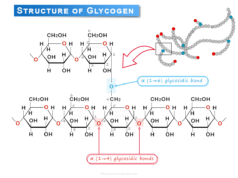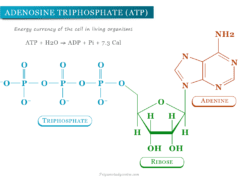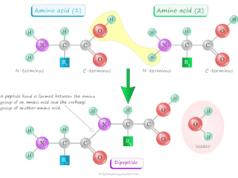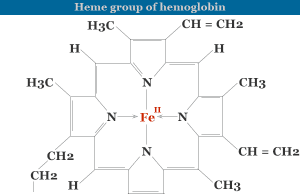Ribonucleic Acid (RNA)
Ribonucleic acid (RNA) is a polymer of ribonucleotides that help in protein synthesis and the production of new cells in our body. It involves the translation of DNA into proteins. RNA carries genetic information which is translated by ribosomes into various proteins necessary for cellular functions. Three types of RNA tRNA, mRNA, and rRNA are commonly involved in protein synthesis. Each RNA has a specific function in protein biosynthesis. The ribonucleic acid molecule is usually a single strand but one RNA and one DNA can form a double helix structure. Ribonucleic acids can be hydrolyzed by alkali or enzymes to form a mixture of ribonucleotides. It is called the hybridization of RNA. Nucleic acids like deoxyribonucleic acid and ribonucleic acid molecules contain the following elements carbon, hydrogen, oxygen, nitrogen, and phosphorus. The structure of ribonucleic acid or RNA is written given below the picture,
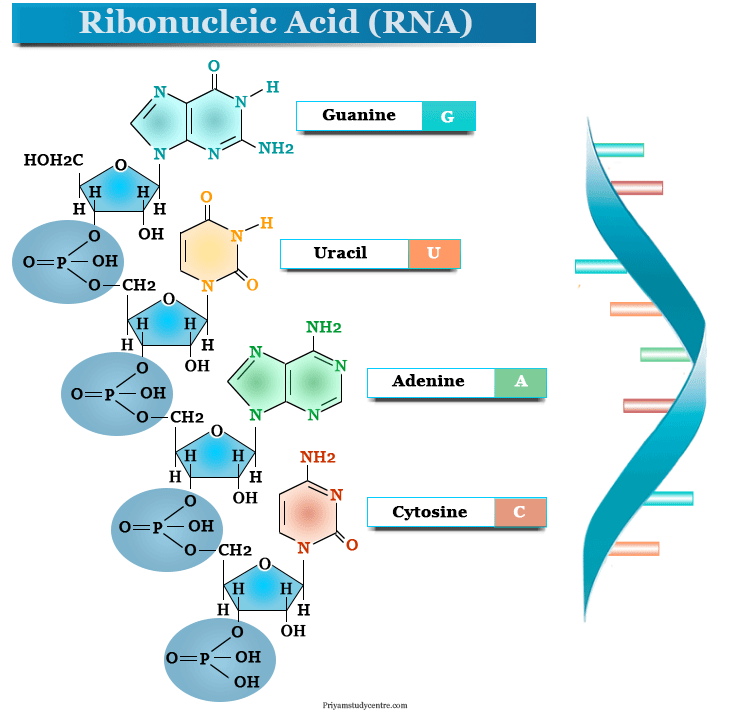
Structure of RNA
The common bases present in RNAs are adenine, guanine, uracil, and cytosine. There are two types of bases that occur in nucleic acids purines and pyrimidines. The most common purine bases are adenine and guanine and pyrimidine bases are uracil, thiamine, and cytosine.
Both types of nucleic acids (RNA and DNA) contain adenine and guanine. On the other hand, RNA contains uracil and cytosine but DNA contains thymine and cytosine.
To elucidate the sequences of bases in RNAs are similar to those used in protein structure determination. End groups of ribonucleic acid can be determined by enzyme hydrolysis of ribonucleic acids with snake venom. The nucleotides of RNAs can be identified by chromatography technique.
The secondary structure of ribonucleic acid (RNA) has been investigated by x-ray analysis. The analysis indicates that RNAs exist as single strands that contain helical segments stabilized by hydrogen bonding. However, some RNAs also exist as double strands or double helical structures.
Types of Ribonucleic Acid (RNA)
Three main types of RNA mRNA, tRNA, and rRNA are involved in protein synthesis. Each performs one type of function in protein biosynthesis. The base composition of different mRNA, tRNA, and rRNA shows little variation. The variation is possible because RNA molecules are very much smaller than DNA molecules. Each RNA is synthesized on a specific part of the DNA molecule.
Messenger RNA (mRNA)
The ribonucleic acid which acts as a messenger or informational is called mRNA. In molecular biology, messenger ribonucleic acid (mRNA) is a single-stranded molecule of RNA that is complementary to one of the DNA strands of a gene. The information on the sequence of amino acids is transferred to the ribosome by mRNA.
Transfer RNA (tRNA)
Transfer ribonucleic acid (tRNA) is a type of ribonucleic acid molecule that brings the amino acids to the site where protein synthesis takes place. Each amino acid has its own specific tRNA which functions at specific sites in the ribosome during translation.
The combination of the two occurs at one end of the tRNA molecule via a carboxyl group of amino acids. Hence the amino group in the bound amino acid residue is free.
The polyribosome is bound to two tRNAs where each of which is attached to its specific amino acid. The site of attachment of each tRNA to the mRNA is determined by the anticodon of the tRNA molecule. The anticodon is complementary to the codon of mRNA. Therefore, each tRNA having a particular anticodon is always attached to a specific amino acid.
The combination of each amino acid with a specific tRNA and charged tRNA to a specific site of mRNA is called translation. The genetic code specified in mRNA is now translated into amino acid sequences of its particular protein.
Ribosomal RNA (rRNA)
Ribosomal ribonucleic acid (rRNA) is a non-coding type of RNA that is essential to all cells. It is the structural component of ribosomes. Ribosomes contain approximately 60 percent of rRNA and 40 percent of proteins by mass.
The function of rRNAs is very similar for all species because the core function of the ribosome is nearly the same for different organisms. The actual sequence of the nucleotides in rRNAs does vary between species but the main function of rRNA is the same.
Functions of ribonucleic acid
Ribonucleic acid (RNA) is one of the two major types of nucleic acids involved in a variety of functions in living organisms like bacteria, viruses, plants, and animals. Ribonucleic acids are involved in several biochemical reactions in living organisms. The main function of different types of RNAs like tRNA, mRNA, and rRNA are,
- Ribonucleic acid (RNA) functions mainly for cellular protein synthesis.
- It converts genetic information stored in DNA to protein in various living organisms. Some viruses use RNA rather than DNA to store genetic information.
- Transfer ribonucleic acids facilitate the translation of DNA into proteins.
- mRNA serves as a messenger between the DNA and ribosomes of living organisms.
- Ribonucleic acid (RNA) helps to promote the ribosomes to choose the right amino acid to constant new protein molecules in the living organism.

